#leonide massine
Photo
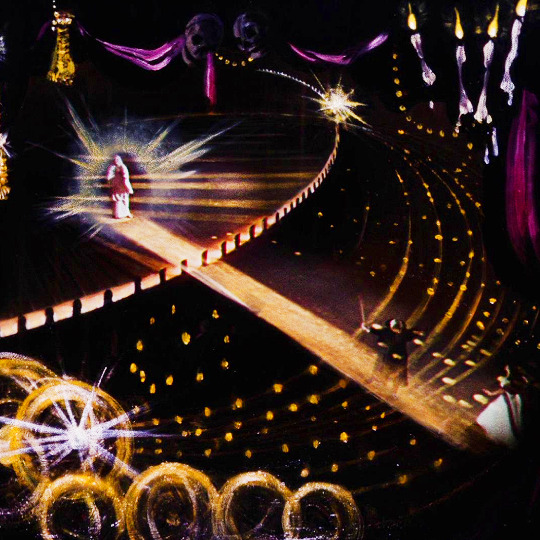

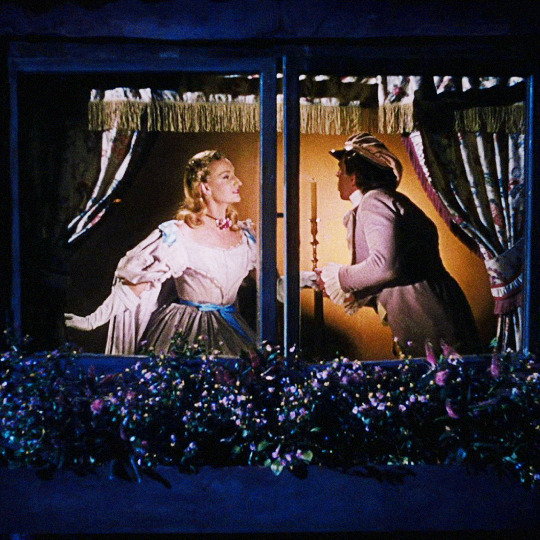

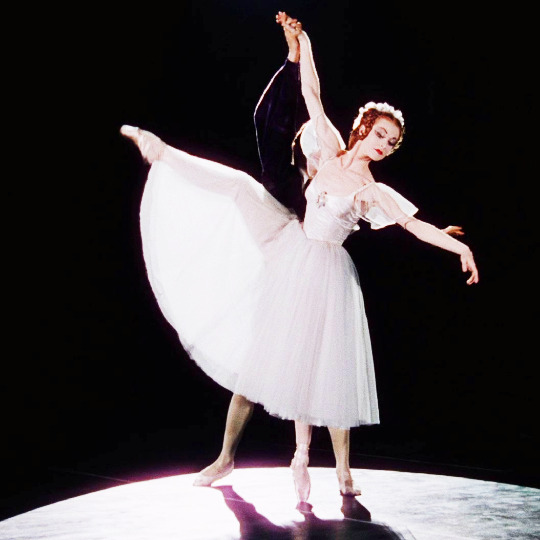
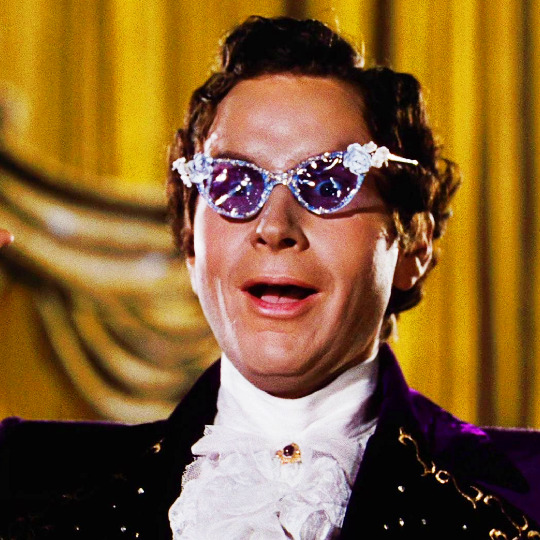
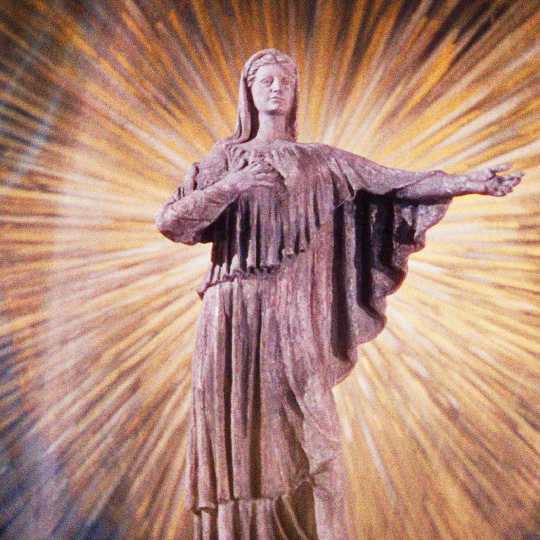
THE TALES OF HOFFMANN (1951)
dir. Michael Powell & Emeric Pressburger
#filmedit#the tales of hoffmann#michael powell#emeric pressburger#1950s#moira shearer#robert rounseville#ludmilla tchérina#robert helpmann#frederick ashton#leonide massine#drama#art#ballet#dance#non gif#this film is a piece of artwork#beautiful
329 notes
·
View notes
Text
The Tales of Hoffmann (1951)
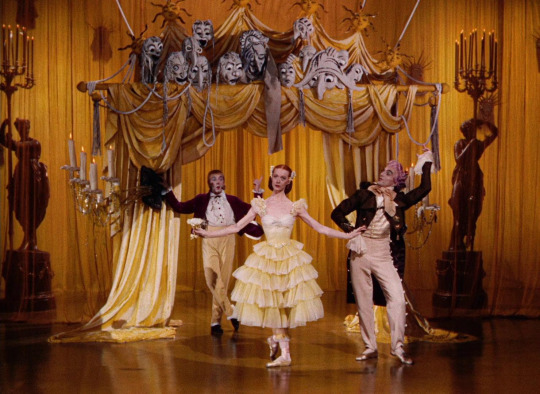
Powell and Pressburger love theatrical performance almost to a fault. Their absolute masterpiece The Red Shoes delves behind the curtain into the catty, cutthroat world of the ballet, and here they put to film an entire opera. And this is most definitely an opera. There are moments of absolute musical bliss scattered in between sequences which drag on almost interminably, and characters take for-fucking-ever to accomplish anything. Lyrics are kinda goofily literal if you think about them for longer than three seconds. Hell, they even managed to squeeze in the endless rounds of applause which conclude any performance—good job all, but Jesus Christ I’d love to go home sometime this week, I have to pee. So it’s opera, love it or leave it. But it’s opera filmed by auteurs who clearly love the medium, which makes it a much more rewarding experience. Regular repertory players pop up here and there, helmed by Robert Helpmann as the incarnation of evil in each tale and Moira Shearer as Hoffmann’s object of desire Stella and first love, Olympia. Helpmann is diabolical down to his very bones, all wild stares and even wilder makeup. Shearer is eminently watchable whenever she dances and here she mixes grace with technical skill and control as the automaton Olympia. She always has such poise and control in her performances. How much her eyes must have been watering after some of those takes, the doll not even blinking once or diverting from its glassy stare. Léonide Massine and Ludmilla Tchérina drop by too for tantalizing dance roles as secondary antagonists. It’s a night at the opera in a decidedly different sense.
The absolute selling point of this film has to be its production design. Nobody does color quite like Powell and Pressburger, every frame painterly in its vibrant handling of Hoffman’s fantastical world. The film leans into an intentionally stagey aesthetic, no attempts made to make sets not seem painted or two-dimensional at points. Puppets and human actors intermingle freely, creating a world where nothing can quite be believed as true—Hoffmann is quite the showman in his recounting of past conquests. They don’t make many attempts to hide their tricks, Dapertutto’s jewel-conjuring simple sleight of hand or edits, for instance. But at points they do take advantage of their medium’s potential, layering images over one another much as they did in The Red Shoes and elsewhere to create ‘magical’ effects. The end result feels like a product plucked out of time, a small but glistening Technicolor gem.
THE RULES
SIP
Two images are overlaid.
Lindorf or his equivalent in a story makes crazy eyes.
Money changes hands.
Applause.
BIG DRINK
The beginning of a tale.
Olympia gets wound up.
Puppet/human or statue/human swap.
#drinking games#tales of hoffmann#powell and pressburger#moira shearer#robert helpmann#leonide massine#drama#opera#offenbach#les contes d'hoffmann#the red shoes
20 notes
·
View notes
Photo









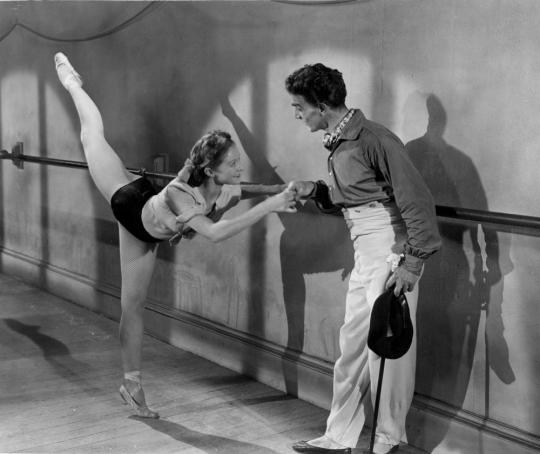
The Red Shoes (1948) Michael Powell and Emeric Pressburger
December 11th 2022
#the red shoes#1948#michael powell#emeric pressburger#moira shearer#anton walbrook#adolf wohlbruck#marius goring#robert helpmann#albert bassermann#leonide massine#esmond knight#eric berry#ludmilla tcherina#powell and pressburger#the archers
14 notes
·
View notes
Text
Positano 50, Festa della Danza
Positano 50, Festa della Danza

View On WordPress
0 notes
Text
THIS DAY IN GAY HISTORY
based on: The White Crane Institute's 'Gay Wisdom', Gay Birthdays, Gay For Today, Famous GLBT, glbt-Gay Encylopedia, Today in Gay History, Wikipedia, and more … March 31



1872 – On this date the Russian choreographer Sergei Diaghilev was born (d.1929). A Russian art critic, patron, ballet impresario and founder of the Ballets Russes from which many famous dancers and choreographers would later arise.
Diaghilev engaged in a number of homosexual relationships. His first important affair was with Dima Filosofov, his cousin, when they were both little more than adolescents; his second with Vaslav Nijinsky, who had already had a homosexual liaison with a wealthy aristocrat, partly in order to help support his mother, sister, and mentally disabled brother (his father had deserted the family). Later affairs of Diaghilev were with Boris Kochno, who served as his secretary from 1921 until the end of his life, and with Anton Dolin, the American dancer. Diaghilev had a close platonic relationship with two women, Misia Sert and the dancer Tamara Karsavina, either of whom he said he would like to have married
One cannot underestimate the influence of Diaghilev's Ballets Russes on the development of 20th century art. But the importance of his sexuality to Diaghelev's creative art is sometimes overlooked. Had he not been a gay man, had he not attracted to his cause the great gay writers, dancers, and artists of the day, the stream of 20th century art may have flowed in an entirely different direction. As Martin Green wrote in Children of the Sun,
"He made the dancer Nijinsky first his lover and then his choreographer, slyly displacing Michel Fokine and inspiring Nijinsky to become the company's chief ballet-creator. Diaghilev's superb taste...was made manifest in this new Nijinksy, the choreographer, and in the ballets he created. These works of art were the children of Diaghilev's sexual passion. The same thing happened later with Leonide Massine and Serge Lifar...These men created ballets under the spell of Diaghilev's passion and he created through them."


1934 – Richard Chamberlain, American actor, born; an American actor of stage and screen who became a teen idol in the title role of the television show Dr. Kildare (1961-1966) and the miniseries The Thornbirds.
Born in Los Angeles, he decided to pursue acting as a career. However, he was drafted into the army for two years, but enrolled in acting classes on his release, where he met his first same-sex love - but fearing the attitudes of the time, the late 1950s, the pair kept their year-long affair secret.
He appeared in his first film in 1960, and the following year won the title role in TV drama Dr Kildare, which ran for five successful years and made Chamberlain a household name and a romantic idol.
He made a number of successful and critically acclaimed movies in the 1970s - Ken Russell's The Music Lovers (1971), proto disaster epic The Towering Inferno (1974), The Swarm (1974) and The Three Musketeers (1974). In the late-70s and 1980s Chamberlain returned to TV and his career thrived in the then-new mini-series genre - Centennial (1978), Shogun (1980) and his best known role as Father Ralph de Bricassart in Colleen McCullough's The Thorn Birds (1983) - a TV phenonemon at the time. When the mini-series fell out of favour, he returned to the theatre where he continues to work.
Chamberlain was romantically involved with television actor Wesley Eure in the early 1970s. In 1977, he met actor-writer-producer Martin Rabbett, with whom he began a long-term relationship. This led to a civil union in the state of Hawaii, where the couple resided from 1986 to 2010 and during which time Chamberlain legally adopted Rabbett to protect his future estate. Rabbett and Chamberlain starred together in, among others, Allan Quatermain and the Lost City of Gold, in which they played brothers Allan and Robeson Quatermain. In the spring of 2010 Chamberlain returned to Los Angeles to pursue career opportunities, leaving Rabbett in Hawaii, at least temporarily.
Chamberlain was outed, at the age of 55, by the French women's magazine Nous Deux in December 1989, but it was not until 2003 that he confirmed his homosexuality, in his autobiography, Shattered Love which describes how he felt obliged to hide his sexuality in order to have an acting career, and detailed affairs with dancer Rudolph Nureyev and actor Anthony Perkins.
Since his coming out Chamberlain has made occasional guest appearances on TV shows such as Will & Grace, Nip/Tuck and Desperate Housewives, usually bringing a new knowingness or just playing gay as he was unable to do for so many years.
In an interview with The Advocate in 2010 promoting his role in ABC's Brothers & Sisters Chamberlain controversially said,
'For an actor to be working [at all] is a kind of miracle, because most actors aren't, so it's just silly for a working actor to say, "Oh, I don't care if anybody knows I'm gay" - especially if you're a leading man.
'Personally, I wouldn't advise a gay leading man-type actor to come out.'


1961 – American composer and pianist Jake Heggie celebrates his birthday today. Born in West Palm Beach, Florida. Heggie is the composer of the operas Dead Man Walking (2000), The End of the Affair (2004), At The Statue of Venus (2005), and To Hell and Back (2006). He is also the composer of more than 200 art songs as well as chamber and concert works.
Heggie started learning the piano when he was five years old. After spending two years in Paris, he continued his studies at the age of 20 at the University of California, Los Angeles, with the pianist Johana Harris (1912-1995), widow of the composer Roy Harris. They married in 1982 and separated in 1993.
In 1998 he was appointed composer in residence to the San Francisco Opera, where his first opera, Dead Man Walking, was first performed in 2000. With a libretto by Terrence McNally and a production by director Joe Mantello, the opera was extensively acclaimed and it ran for two extra performances due to popularity. It has since been seen in 15 international productions. In 2007 alone, Dead Man Walking received more than 50 performances. His second opera, The End of the Affair, was premiered in 2004 at the Houston Grand Opera.
In 2005, Heggie collaborated again with Terrence McNally to create At the Statue of Venus, which opened in Denver. In 2006, he debuted To Hell and Back (libretto by Gene Scheer) in November 2006.
On 29 February 2008, his opera Last Acts, with a libretto by Gene Scheer based on a play by Terrence McNally, opened at the Houston Grand Opera, which commissioned the work in association with the San Francisco Opera and Cal Performances. Last Acts was its working title; it will in future be known as Three Decembers.
On April 30, 2010, Heggie premiered his most recent opera, Moby-Dick (libretto by Gene Scheer) at The Dallas Opera.
Heggie married his partner of eight years, singer aand actor Curt Branom, in October 2008.


1963 – Laurent Daniels, born Laurent Peter Holzamer in Mainz, is a German actor who lives in Berlin.
He is the grandson of former ZDF - director Karl Holzamer.
In 1991, he and David Wilms presented the gay magazine Andersrum, which was broadcast on the local Berlin broadcaster FAB.
From 1997 to 2000 Daniels played the role of homosexual Philip Krüger in Good Times, Bad Times. He also played in the spin-off Großstadtträume in 2000 and tried his hand at singing for a while.
From August 21, 2006 to February 10, 2007 he played the role of Volker Möllenkamp in the telenovela Butterflies in the Belly. In 2007 he appeared in the last episode of Adelheid and her murderers ( Mord à la mode ).
In 2014 he stood in front of the camera for the German production Plan B: Scheiss auf Plan A , which opened in German cinemas on June 8, 2017.

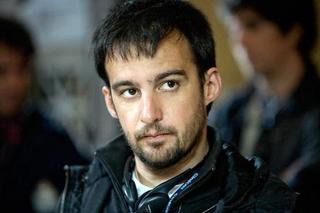
1972 – Spanish filmmaker Alejandro Amenábar was born in Santiago, Chile. In addition to writing and directing his own films, Amenábar has maintained a notable career as a composer of film scores, including the Goya Awards-nominated score for José Luis Cuerda's La lengua de las mariposas.
Amenábar was awarded the Grand Prix of the Jury at the International Venice Film Festival in 2004 for Mar adentro ("The Sea Inside") starring Javier Bardem, and in February 2005 the same film won the Academy Award for Best Foreign Language Film.
In February 2004, Amenábar came out to the Spanish gay magazine Shangay Express.
In 2008 Amenábar shot an epic film called Agora which he wrote with Mateo Gill. Set in Roman Egypt, the film is based on the life of philosopher and mathematician Hypatia of Alexandria.
On 18 July 2015, he married David Blanco.


2014 – Model and activist Geena Rocero comes out as transgender during her TED talk filmed in Vancouver on the Transgender Day of Visibility. She is a Filipino American supermodel, TED speaker, and transgender advocate based in New York City. Rocero is the founder of Gender Proud, an advocacy and aid organization that stands up for the right of transgender people worldwide to gain "self-identify with the fewest possible barriers".


TODAY'S GAY WISDOM
Edward FitzGerald's translation of The Rubaiyat of Omar Khayyam, verses 1 - 12 (of 75):
1
Awake! for Morning in the Bowl of Night
Has flung the Stone that puts the Stars to Flight:
And Lo! the Hunter of the East has caught
The Sultan's Turret in a Noose of Light.
2
Dreaming when Dawn's Left Hand was in the Sky
I heard a Voice within the Tavern cry,
Awake, my Little ones, and fill the Cup
Before Life's Liquor in its Cup be dry.
3
And, as the Cock crew, those who stood before
The Tavern shouted--Open then the Door.
You know how little while we have to stay,
And, once departed, may return no more.
4
Now the New Year reviving old Desires,
The thoughtful Soul to Solitude retires,
Where the WHITE HAND OF MOSES on the Bough
Puts out, and Jesus from the Ground suspires.
5
Iram indeed is gone with all its Rose,
And Jamshyd's Sev'n-ring'd Cup where no one knows;
But still the Vine her ancient Ruby yields,
And still a Garden by the Water blows.
6
And David's Lips are lock't; but in divine
High piping Pelevi, with Wine! Wine! Wine!
Red Wine!--the Nightingale cries to the Rose
That yellow Cheek of hers to'incarnadine.
7
Come, fill the Cup, and in the Fire of Spring
The Winter Garment of Repentance fling:
The Bird of Time has but a little way
To fly--and Lo! the Bird is on the Wing.
8
And look--a thousand Blossoms with the Day
Woke--and a thousand scatter'd into Clay:
And this first Summer Month that brings the Rose
Shall take Jamshyd and Kaikobad away.
9
But come with old Khayyam, and leave the Lot
Of Kaikobad and Kaikhosru forgot:
Let Rustum lay about him as he will,
Or Hatim Tai cry Supper--heed them not.
10
With me along some Strip of Herbage strown
That just divides the desert from the sown,
Where name of Slave and Sultan scarce is known,
And pity Sultan Mahmud on his Throne.
11
Here with a Loaf of Bread beneath the Bough,
A Flask of Wine, a Book of Verse--and Thou
Beside me singing in the Wilderness--
And Wilderness is Paradise enow.
12
How sweet is mortal Sovranty!--think some:
Others--How blest the Paradise to come!
Ah, take the Cash in hand and waive the Rest;
Oh, the brave Music of a distant Drum!


11 notes
·
View notes
Text
The Unofficial Black History Book
Janet Collins (1917-2003)


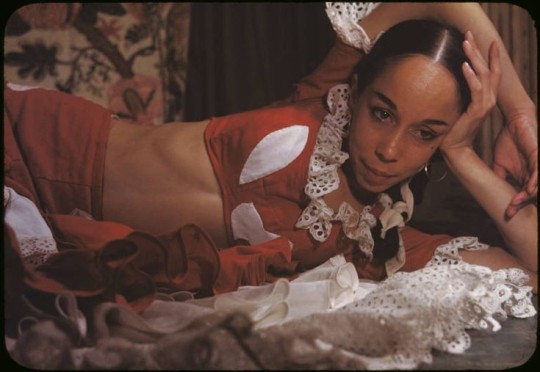


The history of ballet began around the 1500s in Italy. The term "ballet" stems from the Italian word "Ballare," meaning to dance. When ballet was introduced to America in the early twentieth century, it was a new form of art. Unfortunately, African Americans couldn't be part of ballet culture for many years, saying that our bodies were wrong for ballet.
Until one woman broke one of the last major color barriers in classical ballet,
This is her story.
Janet Faye Collins became the first African American prima ballerina and one of the very few prominent black women in American classical ballet. And the first black prima ballerina to perform with the Metropolitan Opera Ballet in New York City, New York.
She broke one of the last major color barriers in Classical Ballet.
Janet Collins was born on March 2, 1917, in New Orleans, Louisiana. Her mother was a seamstress, and her father was a tailor. They moved to Los Angeles, California, in 1921, when she was four years old.
She started taking private dancing lessons at a Catholic community center, and ironically, Collin's parents urged her to study painting rather than dance. Because at that time, art seemed to offer more opportunities to gifted African Americans than classical dance.
Collins studied art on a scholarship at Los Angeles City College and later at the Los Angeles Art Center School.
But she continued her dance training and attracted the attention of Adolph Bohm, Carmelita Maracci, and Mia Slavenska. All prominent dance instructors agreed to work with her. She continued her dance training with Carmelita Maracci, who was one of the few dance teachers at the time to accept black students.
At the age of 15, Janet prepared to audition for Leonide Massine and the De Basil Ballet Russe Company. The company was performing in Los Angeles during its American tour and advertised for an aspiring young dancer to audition for the company.
When it was Janet's turn, she was one of the best to audition. She moved with such beauty and grace that all the other ballerinas applauded her.
Massine saw her talent and accepted her into the company. But only under one condition...
He told her she would have to paint her face white for performances.
Going further into my notes, she was told that she would either need "special roles" created for her or dance with a white face to disguise the fact that she was black.
Collins left the audition in tears and vowed to perfect her art so that race would not be an issue.
In an exchange quoted in U.S. News & World Report, she responded, "I thought talent mattered, not color."
Collins found a cold reception in professional ballet, despite her training. However, she didn't let that set her back, and she continued to perform.
In the 1930s, when she was still in her teenage years, she performed as an adagio dancer in vaudeville productions.
In 1940, she became the principal dancer for the Los Angeles musical productions of "Run Little Chillun" and "The Mikado in Swing". At this time, she worked with the Katherine Dunham Dance Company.
In 1943, she performed in the musical film "Stormy Weather," and in 1946, she appeared in the film, "Thrill of Brazil."
In 1949, Collins made her New York debut after performing her own choreography on a shared program at the 92nd Street NY. In the same year, and after two more performances, Dance Magazine named her "The most outstanding debutante of the season."
Collins made her debut as a prima ballerina on November 3rd, 1948, at the Las Palmas Theater in Los Angeles, and critics praised her as a one-of-a-kind performer.
Zachary Solov, the Metropolitan Opera House's ballet master, noticed her in a Broadway production of Cole Porter's "Out of this World" in 1951. Solov then invited Collins to join the Metropolitan Company when she was 34.
November 13th, 1951: Collins broke a color barrier after her performance of ‘Aida'. She was the first African American prima ballerina with the Metropolitan Opera after a year of joining the Corps de Ballet. It marked the first time a black artist had joined the permanent company.
Unfortunately, Collins faced racism on the road as the company toured southern cities, despite her success in New York.
She was kept off stage due to Race laws, and sometimes her parts were performed by understudies who were white.
She remained at the Met until 1954. She would then go on to tour across the United States and Canada. She then began teaching ballet, which included using dance in the rehabilitation of the handicapped.
She also taught at the School of American Ballet, the San Francisco Ballet School, and the Harkness House.
Janet retired from performing and teaching in 1974. She spent the last years of her life painting religious subjects in her studio in Seattle.
Janet Collins died on May 28th, 2003, in Fort Worth, Texas, at 86 years old.
Despite all that was thrown at her, Janet Collins made a legacy for herself by becoming the first African-American Prima ballerina with the Metropolitan Opera and breaking its color line.
__
Previous
The 16th Street Baptist Church Bombing
Next
Juneteenth
___
My Resources
#the unofficial black history book#black history#black culture#black female writers#writing#indie writer#starving writer#black women#black activism#black writblr#black love#black ballerina#black icons#herstory#history#black history matters#black excellence#women of black history#janet collins#discrimination#black arts#preforming arts#writers on tumblr#women in history#black tumblr
12 notes
·
View notes
Photo

Leonide Massine, Ballets Russes dancer and choreographer. Photograph from 1916 souvenir program. In 1919, Massine collaborated with Picasso and de Falla to create and star in The Three-Cornered Hat.
54 notes
·
View notes
Text


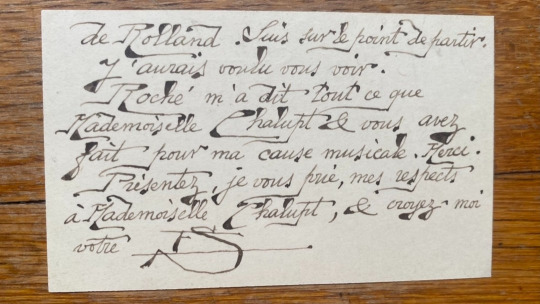
OTD in Music History: Composer and French cultural icon Erik Alfred Leslie Satie (1866 - 1925) is born in France.
The son of a French father and a British mother, as a young man, Satie briefly studied at the Paris Conservatory -- but was an undistinguished student who failed to obtain a diploma.
In the 1880's, he worked as a cafe pianist in Montmartre, where he began composing solo piano works, including his most famous set, the "Gymnopedies." (He also wrote music for a Rosicrucian sect to which he was briefly attached.)
After a spell during which he composed little, Satie enrolled at a second music academy -- Vincent d'Indy's (1851 - 1931) "Schola Cantorum" -- as a mature student. His studies there were far more successful than those at the Conservatory, and from 1910 onward he became the focus of successive waves of young composers who were attracted by his unconventionality and originality.
Among them were the group known as "Les Six," and a 1915 meeting with Jean Cocteau (1889 - 1963) led to the creation of the ballet "Parade" (1917) for impresario Serge Diaghilev (1872 - 1929), with music by Satie, sets and costumes by Pablo Picasso (1881 - 1973), and choreography by Leonide Massine (1896 - 1979).
Satie had a tremendous impact on pushing French music away from lush post-Wagnerian impressionism and towards a sparer, terser style. Among those directly influenced by him during his lifetime were Maurice Ravel (1975 - 1937) and Francis Poulenc (1899 - 1963), and he is also often cited as influence on later composers such as John Cage (1912 - 1992).
Satie was also one of the first "Dadaist" cultural figures -- some of his later works were given purposely absurd titles like "True Flabby Preludes (for a Dog)" (1912) and "Sketches and Exasperations of a Big Wooden Man" (1913).
PICTURED: An original copy of one of Satie's printed business card, identifying him as "Erik Satie, Composer of Music." He wrote a short social message on this copy in his trademark calligraphic handwriting.
#Erik Satie#Satie#composer#classical composer#classical music#bel canto#music history#classical studies#classical composers#Gymnopédies#Gnossiennes#Paris Conservatoire#Notre-Dame de Paris#Prélude#Danses gothiques#Enfantines#Allegro#Valse-ballet#Fantaisie-valse#Premier Menuet#Orchestra#Danse#Musique d'ameublement#Cabaret songs#songs
16 notes
·
View notes
Text
sorry to be crass but leonide massine put his whole pussy into that one.
2 notes
·
View notes
Text

Joan Miro, costume for the ‘Spinning Top’ in Leonide Massine’s ballet Jeux d’Enfants, 1932. © Victoria and Albert Museum, London
31 notes
·
View notes
Text
Gallo lungo

The property has been on and off the market for years, most recently a public listing of the three islands in 2011 was for US$268,000,000. The island was described by the playwright’s wife, Isabella, in a book entitled, In mezzo al mare un'isola c'è. Isca has a villa and garden on the side facing the cliff (and, thus, not visible if sailing behind the island). The Neapolitan playwright Eduardo De Filippo purchased this island, which was later owned by his son Luca De Filippo. Members of the public are not allowed to land but can swim in the surrounding waters. He also installed a desalinization plant which provided a reliable water supply to and assisted in the development of the gardens,Īfter Nureyev’s death the islands were purchased from his foundation in 1996 by Giovanni Russo, a Sorrento hotelier who besides using them as a private residence also makes them available for private rental with a staff of 7 and a launch to take guests to and from the mainland. He redecorated the villa in the Moorish style and clad its interiors with 19th-century tiles from Seville. Shirley Hazzard in her book Greene on Capri recounts a visit to Massine.Īfter Massine’s death the islands were purchased in 1988 by Russian dancer Rudolf Nureyev, who spent the last years of his life here. The villa featured the bedrooms facing Positano with a large terrace garden on the first floor facing Cape Licosa and Capri. With design advice from his friend Le Corbusier he constructed a villa on the site of the original Roman structure. The theatre was subsequently destroyed by a storm. Initially Massine restored and converted the old Aragonese Tower on Gallo Lungo into accommodation with a dance studio and featuring an open-air theatre. In 1922, he purchased Gallo Lungo and began converting it from a place of defense into a private residence. In 1919 the Russian choreographer and dancer Leonide Massine sighted the islands while staying with a friend in Positano. The town later sold the islands to a native of Salerno who sold them to Davide Pariato. Eventually with the establishment of the Republic of Italy ownership passed to the town of Positano. Responsibility for the islands then passed to Catalian Gilberto Squanes, the Miroballo family and then to the Marino Mastrogiudice before passing to the crown and then the Marquises of Positano. The wardenship was subsequently passed to Angelo Balbo in 1382 and in 1425 to Viviano Mirelli. The tower (today called the Aragonese Tower) was constructed around 1312 and occupied by a garrison of four soldiers. As he lacked sufficient funds he accepted an offer from Pasquale Celentano of Positano to lend the required funds, in return for being appointed warden of the fortification. To deter them, Charles wished to build a watchtower on top of the remains of a Roman tower on Gallo Lungo. Originally Gallo Lungo hosted a monastery and then a prison.ĭuring the reign Charles II of Naples (late 13th century), the Amalfi coast became subject to increasing attacks by pirates. Originally the site of an ancient Roman anchorage, in the Middle Ages the islands became medieval fiefdoms of the 13th-century Emperor Frederick II and the Capetian House of Anjou. The modern name, I Galli or The Cocks, references the bird-like form of the ancient sirens. The terms Sirenai and Sirenusai, from the Latin Sirenusae, meaning indicate both the sirens themselves and their residence. In ancient stories, the sirens were depicted as having bodies of a bird and human heads, but the medieval interpretations of the stories depicted them as mermaids. They are mentioned in the 1st century BC by Strabo, the Greek Geographer and by Straton of Sardis in 120 AD. One of them played the lyre, another sang, and another played the flute. Several sirens were said to have inhabited the islands, the most famous of whom were Parthenope, Leucosia, and Ligeia. Smaller islets include, nearer the shore, Isca and, midway between the main islands and Isca, a prominent rocky outcropping that juts above the water, Vetara. La Castelluccia, also known as Gallo dei Briganti.Gallo Lungo, which takes the form of a dolphin.The archipelago consists of three main islands:

0 notes
Photo



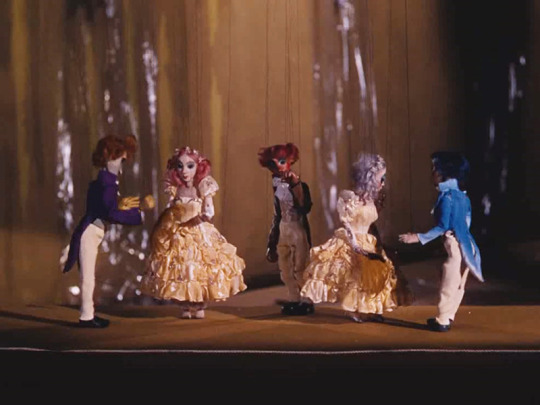




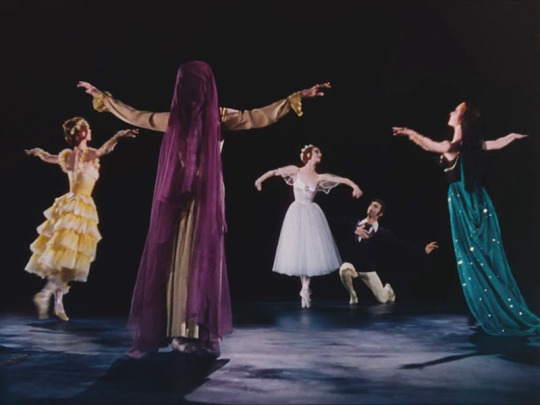
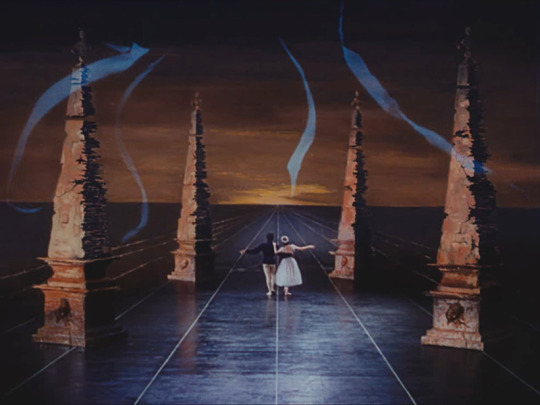
THE TALES OF HOFFMANN (Michael Powell & Emeric Pressburger, 1951)
#the tales of hoffmann#los cuentos de hoffmann#los cuentos de hoffman#michael powell#emeric pressburger#moira shearer#ludmilla tcherina#ann ayars#pamela brown#leonide massine#robert helpmann#frederick ashton#mogens wieth#robert rounseville#film#cine
166 notes
·
View notes
Text




The Red Shoes
Emeric Pressburger, Michael Powell (Cir. 1948)
#cinéma#film#old films#film stills#red shoes#moira shearer#Adolf Wohlbrück#marius goring#Piano#ballerina#ballet#Leonide Massine
9 notes
·
View notes
Link
#tales of hoffman#powell and pressburger#powell & pressburger#emeric pressburger#michael powell#moira shearer#the red shoes#jacques offenbach#offenbach#opera#film#1951#ballet#léonide massine#massine#leonide massine
5 notes
·
View notes
Photo

Igor Stravinsky and Leonide Massine
112 notes
·
View notes
Photo


Léonide Massine (deceased)
Gender: Male
Sexuality: Bisexual
DOB: 9 August 1896
RIP: 15 March 1979
Ethnicity: Russian
Occupation: Choreographer, ballet dancer
Note: Was the lover of Sergei Diaghilev for a number of years
#Léonide Massine#Leonide Massine#lgbt history#male#bisexual#1896#rip#historical#Choreographer#ballet dancer#dancer#white#russian#popular#popular post
116 notes
·
View notes